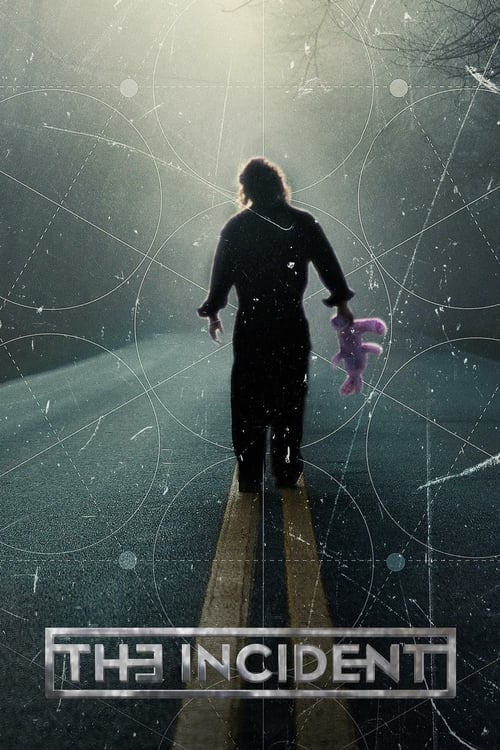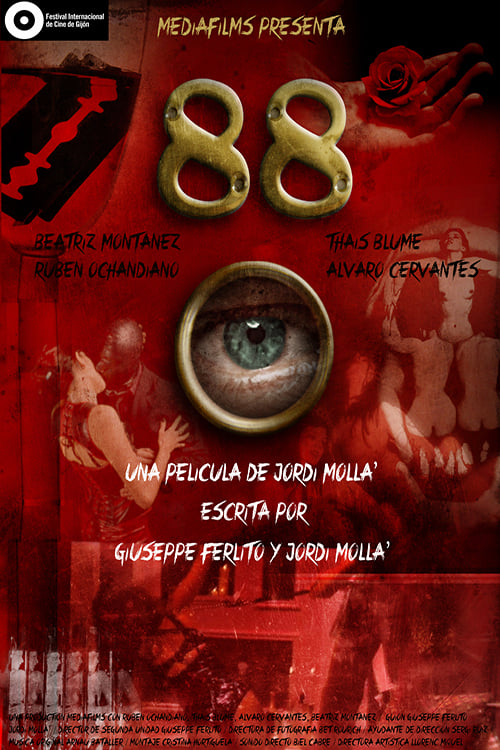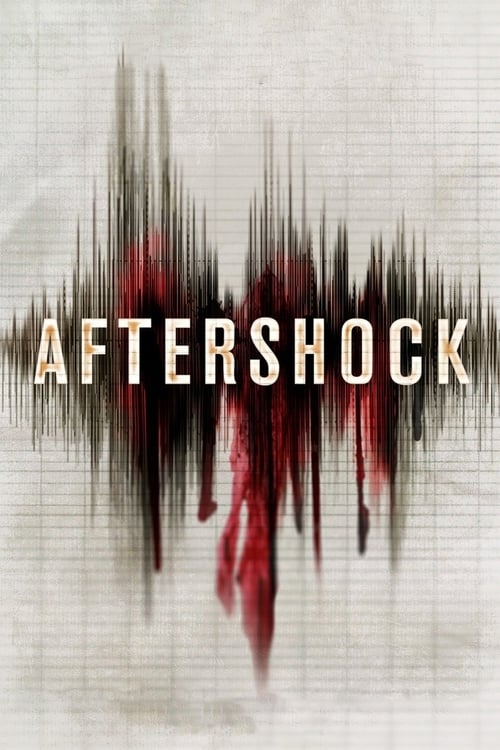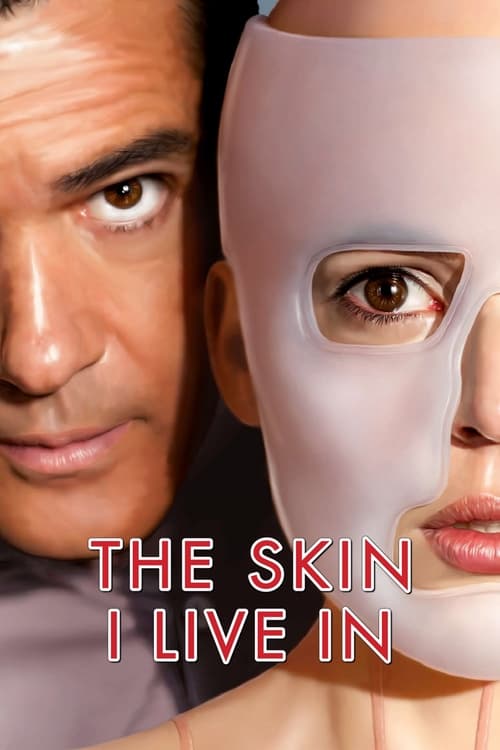
Ask Your Own Question
What is the plot?
The Complete Story of Demon Inside (2013)
The film opens in the sterile, fluorescent-lit corridors of a psychiatric hospital, where Marta stands clutching a small bag of belongings, preparing to step back into a world that terrifies her. She is being released after months of treatment for severe PTSD and agoraphobia, conditions born from a trauma so profound that it has shattered not only her mind but her entire sense of self. As she moves through the hospital hallways, her internal monologue whispers the words that define her current existence: "I can't see anything anymore." These words carry a double meaning--she cannot see the world beyond her fear, and more significantly, she can no longer see the future with the clairvoyant gift that once made her a recognized and successful psychic.
Monica arrives to pick up her friend, and there is an immediate sense of relief mixed with lingering anxiety. Monica is supportive and reassuring, telling Marta, "You'll be safe at my uncle's apartment. No one will find you there." These words are meant to comfort, but they also reveal the underlying fear that has consumed Marta's life--the fear that someone will find her, that the past will catch up with her. Monica has arranged for Marta to stay in her uncle's apartment, a place that promises sanctuary and isolation from the world that has become so threatening.
The Trauma That Started Everything
Before Marta's release, the film takes us back to the events that destroyed her life. In a vivid and disturbing flashback, we see Marta running a small psychic shop, a cozy space filled with tarot cards, crystals, and the trappings of her former profession. She is confident, capable, and in control of her gift. A man named Mario enters her shop as a client. He is charming and attractive, an architect by profession, and he and Marta have a few innocent dates. For a moment, it seems like Marta might find happiness, that her life might move forward in a positive direction.
But then everything changes.
Mario appears one evening in a parking facility, his demeanor completely transformed. He is disturbed, agitated, and his eyes have lost all the warmth they once held. What follows is a violent rape that shatters Marta's world. The scene is intense and traumatic--Marta screams and struggles to escape, but Mario overpowers her completely. This moment is the catalyst for everything that follows in the film. It is the reason Marta ends up in the psychiatric hospital, the reason she develops agoraphobia, and the reason she loses faith in her psychic abilities. Most importantly, it is the reason she cannot see the danger that is coming for her.
The Apartment and the Beginning of Isolation
Marta and Monica drive through the city streets to Monica's uncle's apartment. The building is modern and nondescript, the kind of place where someone could disappear into anonymity. The apartment itself is small and clean but feels claustrophobic despite its modest size. There is a living room with a window that overlooks the street below, a kitchen, a bedroom, and a bathroom. The window becomes significant almost immediately--it is both a source of comfort and a source of terror for Marta. Through it, she can see the outside world, but the outside world can also see her.
As Marta settles into the apartment, Monica tries to reassure her further. She tells Marta that Mario has been imprisoned, that he is locked away and cannot reach her. This lie is meant to be kind, to give Marta peace of mind so that she can begin to heal. But it is a lie nonetheless, and it will have serious consequences.
Marta begins to establish a routine in the apartment. She spends her days looking out the window, watching the street below, observing the world from a safe distance. She uses the internet to research, to check up on things, to maintain some connection to information and reality. But one day, while searching online, she makes a horrifying discovery. Mario was acquitted of the rape charges. He is not in prison. He is on the loose, somewhere out there in the world, and there is nothing stopping him from finding her.
The realization hits Marta like a physical blow. She calls Monica in a panic, demanding answers. Monica finally admits the truth--she lied about Mario's imprisonment. She did it to make Marta feel safe, to give her a chance to heal without the constant fear of her attacker. But the lie has backfired, and now Marta's sense of security is completely shattered.
The Neighbors and the Encroaching Chaos
Life in the apartment becomes increasingly complicated. Marta has neighbors, and they are, by all accounts, difficult people. There are confrontations--Marta watches them through her kitchen window, and they notice her watching. One neighbor in particular becomes angry and hostile, their reactions seeming disproportionate to the simple act of being observed. These interactions add to Marta's sense of isolation and paranoia. She is trapped in the apartment, afraid to go outside, and now even the walls around her feel thin and permeable.
The neighbors represent the chaos of the outside world intruding into Marta's sanctuary. They are unpredictable, volatile, and they make Marta feel even more unsafe. She begins to withdraw further, spending more time in her apartment, avoiding any interaction with the people around her.
The Visions Begin
As days pass in the apartment, Marta begins to experience visions. These are not the controlled, intentional visions of her former psychic practice--these are involuntary, intrusive, and deeply disturbing. She sees a woman, a figure that appears to be a specter, a ghost. This woman has been murdered in a horrible fashion, and her death plays out repeatedly in Marta's mind. The visions are graphic and violent, showing Marta scenes of brutality and suffering.
At first, Marta believes these visions are genuine--that she is seeing the ghost of a woman who was murdered in her apartment, that the supernatural is reaching out to her. The visions terrify her, but they also seem to confirm that her psychic gift is returning, that she is beginning to see again. She becomes obsessed with understanding who this woman is, what happened to her, and why her spirit is haunting the apartment.
Marta experiences these visions both through the apartment's cameras (which she has set up for security) and through her own mind. She sees the specter appearing in different rooms, sees the violence of her death replayed over and over. The visions blur the line between what is real and what is imagined, between what is supernatural and what is psychological.
The Truth About the Visions
Marta calls Monica and tells her about the visions, about the murdered woman, about the ghost that is haunting her apartment. Monica listens, and then she tells Marta something that changes everything. She has spoken to her uncle, the owner of the apartment, and he has confirmed that the apartment has been empty for months. No one has ever been murdered there. There is no dead woman, no ghost, no supernatural presence.
This revelation is devastating and confusing. If there is no ghost, then what has Marta been seeing? Are the visions products of her damaged mind, manifestations of her trauma and paranoia? Or is something else happening, something that Marta does not yet understand?
The answer comes to Marta in a moment of clarity. She realizes that her visions are not visitations from a ghost in the past--they are her gift trying to warn her about her own imminent future. The woman she has been seeing, the violence she has been witnessing, is not something that has already happened. It is something that is going to happen to her. Her psychic abilities have not abandoned her; they have been trying to protect her all along, showing her the danger that is coming.
The Climax: Mario Returns
One evening, while Marta is standing in her bathroom, the door opens. Mario is there. He has found her. He is angry, disturbed, and dangerous. He has a pair of scissors in his hand, and his intentions are clear--he wants to rape her again, and he is willing to use violence to do it.
Mario attacks Marta, stabbing her with the scissors. The attack is brutal and terrifying. Marta is wounded, bleeding, and in pain. But she fights back with a desperation born from survival instinct. She struggles against him, trying to escape, slowly dragging herself from room to room, trying to reach the landing, trying to get away from him.
As the attack unfolds, Marta realizes something profound. Every instant of what is happening is identical to her visions. The placement of the furniture, the trajectory of the attack, the sequence of events--it all matches perfectly with what she has been seeing in her visions. This is the moment she has been warned about. This is the future that her gift has been trying to prevent.
But knowing about the future does not stop it from happening. Marta is still wounded, still in danger, still fighting for her life. The confrontation is intense and visceral, a struggle between predator and prey, between a man intent on violence and a woman fighting for survival.
The Aftermath and Recovery
Marta manages to fight Mario off. She does not kill him, but she resists him with enough force and determination that he is driven away. She is badly wounded from the scissors, bleeding and traumatized, but she is alive. She has survived the attack that her visions warned her about.
In the aftermath of the attack, Marta begins a process of recovery that is both physical and psychological. She is wounded, yes, but she is also transformed. She has confronted the danger that has haunted her, she has faced her attacker, and she has survived. More importantly, she has reconnected with her psychic gift. Her visions were not a sign of her mental deterioration--they were a sign of her power returning, of her ability to see the future reasserting itself.
The Resolution
The film ends with Marta in her apartment, recovering from her wounds. She is no longer looking out the window with fear. She is no longer trapped by her agoraphobia in the same way she was before. She has been through the worst, and she has survived it. She looks at the tarot cards that are scattered around her apartment--the tools of her former profession, the symbols of her lost gift. And she smiles.
This smile is significant. It suggests that Marta is beginning to heal, that she is beginning to reclaim her identity, that she is starting to move forward. She has not returned to her old life--that life is gone, destroyed by trauma. But she is building a new life, one that incorporates both her pain and her power, both her vulnerability and her strength.
The film ends with Marta standing in her apartment, no longer afraid, beginning to understand that her gift has never truly left her. It has simply been transformed by her trauma into something different, something that warns her of danger rather than simply predicting the future. She is no longer the successful psychic she once was, but she is becoming someone new--someone who has been tested by fire and has emerged stronger, more aware, and more connected to her own power.
The apartment that once felt like a prison now feels like a sanctuary--not because the outside world has changed, but because Marta has changed. She has confronted her trauma, she has faced her attacker, and she has survived. And in that survival, she has found the beginning of healing and the return of her gift, transformed by pain into something that protects rather than merely predicts.
What is the ending?
In the ending of "Demon Inside," the protagonist, a young woman named Sarah, confronts the demonic entity that has been tormenting her and her friends throughout the film. In a climactic showdown, she faces her fears and ultimately sacrifices herself to save her friends. The film concludes with a haunting image of her friends mourning her loss, while the demonic presence lingers, suggesting that the battle against evil is far from over.
Now, let's delve into the ending in a more detailed narrative fashion.
As the final act unfolds, the atmosphere is thick with tension. Sarah, having endured relentless torment from the demonic force, stands in the dimly lit living room of the abandoned house where much of the horror has transpired. Shadows flicker across the walls, and the air is heavy with an oppressive silence, broken only by the distant echoes of her friends' panicked voices. They are trapped, and the entity has begun to pick them off one by one.
Scene by scene, the tension escalates. Sarah's friends, Mark and Lisa, are cornered in a separate room, their faces pale with fear. They can hear the whispers of the demon, taunting them, promising to take their souls. Meanwhile, Sarah, filled with a mix of dread and determination, recalls the stories she heard about the demon's origins. She realizes that the only way to defeat it is to confront it directly, to face the darkness that has haunted her.
In a moment of clarity, Sarah gathers her courage. She finds a makeshift weapon--a shard of glass--and steels herself for the confrontation. As she steps into the main room, the lights flicker ominously, and the temperature drops. The demon manifests, a grotesque figure with hollow eyes and a twisted grin, embodying all of Sarah's fears. It taunts her, revealing her insecurities and regrets, trying to break her spirit.
But Sarah stands firm. She recalls the love and support of her friends, the moments of joy they shared, and the strength they drew from one another. With a fierce resolve, she challenges the demon, declaring that it will not take her or her friends. The demon, enraged by her defiance, lunges at her, but Sarah, in a moment of desperation, plunges the shard of glass into her own heart, a sacrificial act meant to sever the demon's hold on her friends.
As she collapses, a blinding light envelops the room. The demon shrieks in fury, its form disintegrating as it loses its power. Mark and Lisa, witnessing Sarah's sacrifice, rush to her side, their faces a mix of horror and grief. They hold her as she takes her last breaths, her eyes filled with a serene acceptance. "I love you," she whispers, and with that, she passes away, leaving her friends devastated.
In the aftermath, Mark and Lisa are left to grapple with the loss of their friend. They sit together in the now-silent house, the weight of grief heavy upon them. The camera lingers on their faces, capturing the raw emotion of their sorrow. Outside, the sun begins to rise, casting a warm glow over the scene, but the lingering presence of the demon is felt in the air, suggesting that while Sarah's sacrifice has saved them for now, the battle against evil is not truly over.
The film closes with a haunting shot of the house, now seemingly peaceful, yet the shadows hint at the darkness that still lurks within. The fate of Mark and Lisa remains uncertain, as they must now carry the burden of their friend's sacrifice and the knowledge that the demon may one day return.
Is there a post-credit scene?
In the movie "Demon Inside," there is no post-credit scene. The film concludes its narrative without any additional scenes or content after the credits roll. The story wraps up with the main events and character arcs resolved, leaving no further revelations or cliffhangers for the audience to ponder after the film ends.
What role does the setting play in the development of the plot?
The setting, primarily an isolated house, serves as a character in itself, amplifying the film's themes of entrapment and fear. The dimly lit rooms and creaking floors create a claustrophobic environment that mirrors the characters' escalating paranoia. As the story progresses, the house becomes a battleground for the characters' internal struggles, with each room holding memories and secrets that contribute to the unfolding horror.
What is the significance of the character Sarah in the story?
Sarah is a central character whose journey reflects the struggle between good and evil. As the narrative unfolds, her internal conflict becomes more pronounced, especially as she grapples with the demonic presence that threatens her and those around her. Her emotional state fluctuates between fear, determination, and despair, making her a relatable figure as she seeks to understand her own identity amidst the chaos.
How does the demon manifest itself throughout the film?
The demon in 'Demon Inside' manifests in various ways, primarily through psychological manipulation and physical possession. It preys on the fears and insecurities of the characters, leading to intense moments of horror. The visual representation of the demon often includes dark, shadowy figures and unsettling sounds that heighten the tension, creating an atmosphere of dread that permeates the film.
How do the relationships between characters evolve throughout the film?
The relationships between characters in 'Demon Inside' are fraught with tension and mistrust, particularly as the demonic influence begins to take hold. Initially, friendships are strong, but as paranoia sets in, alliances shift, and betrayals occur. The emotional stakes rise as characters confront their own fears and the darkness within themselves, leading to heartbreaking moments of loss and sacrifice.
What is the backstory of the demon and how does it affect the characters?
The backstory of the demon is revealed through fragmented flashbacks and conversations among the characters. It is tied to a tragic event that occurred in the house, involving a previous occupant who succumbed to darkness. This history haunts the current characters, as they begin to uncover the truth about the demon's origins. The knowledge of this backstory deepens their fear and desperation, as they realize they are not just fighting a supernatural entity, but also the legacy of pain and suffering it represents.
Is this family friendly?
"Demon Inside," produced in 2013, is not considered family-friendly. The film contains several potentially objectionable or upsetting scenes that may be distressing for children or sensitive viewers.
-
Horror Elements: The film features intense horror themes, including supernatural occurrences and demonic possession, which can be frightening.
-
Violence: There are scenes depicting violence, including physical confrontations and moments of aggression that may be unsettling.
-
Gore: The film includes graphic imagery and gore, which can be disturbing to viewers, particularly younger audiences.
-
Psychological Tension: The narrative builds a sense of dread and psychological horror, which may be overwhelming for sensitive viewers.
-
Themes of Death and Loss: The film explores dark themes related to death, loss, and the impact of evil, which can be emotionally heavy.
-
Disturbing Imagery: There are moments that may include unsettling visuals or scenarios that could provoke anxiety or fear.
Overall, the film's content is geared towards an adult audience and may not be suitable for children or those who are sensitive to horror and psychological themes.






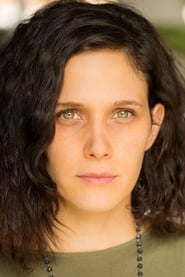
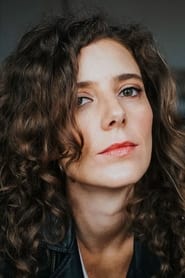



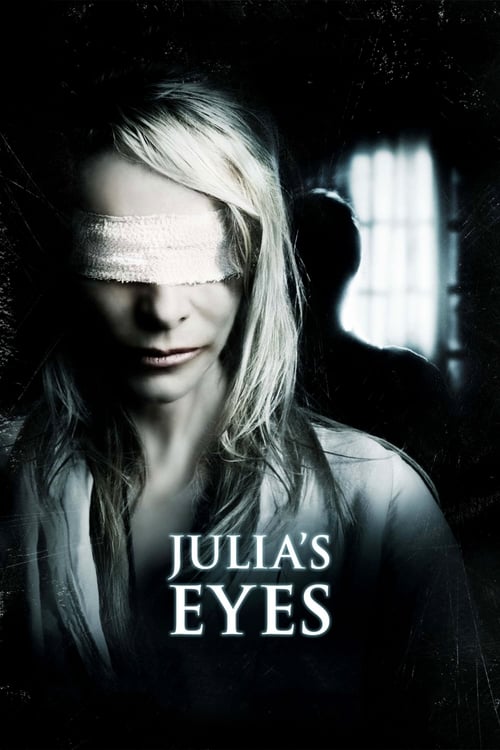


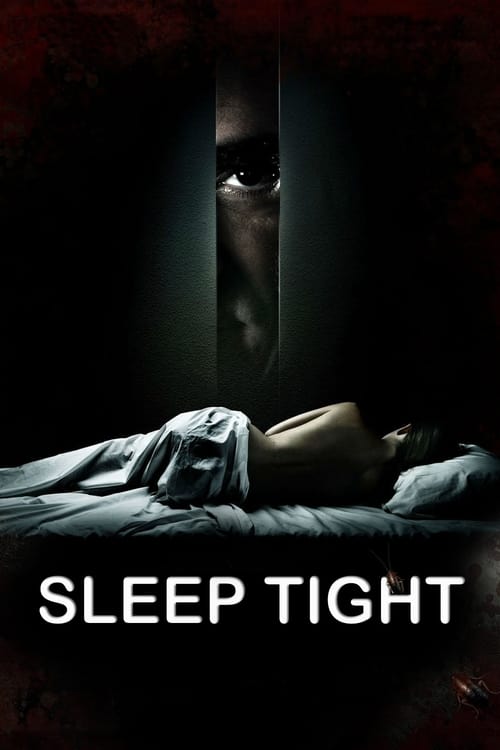
![[REC]⁴ Apocalypse (2014) poster](https://image.tmdb.org/t/p/w500/nlSSZNESHkY1iPzYnpcRvYUr7Mz.jpg)
